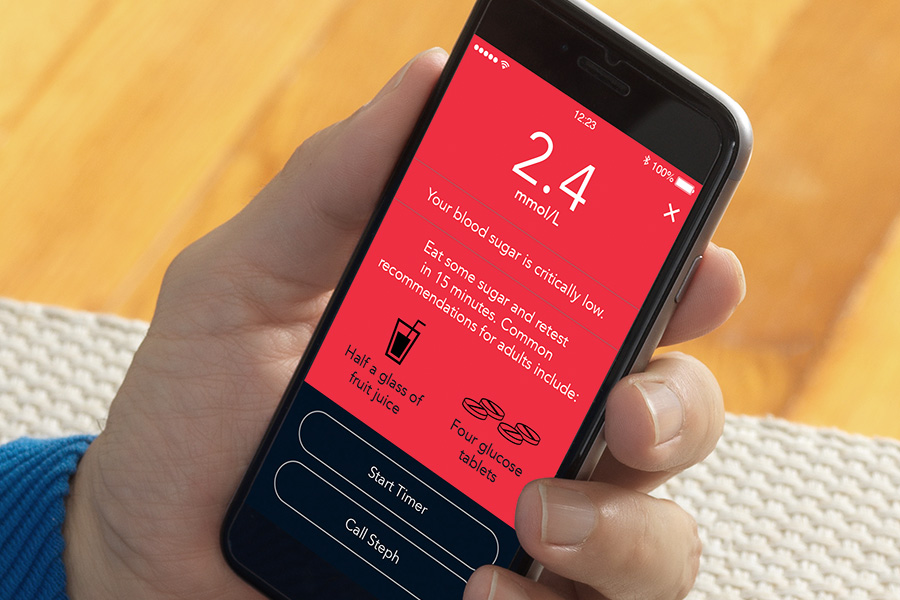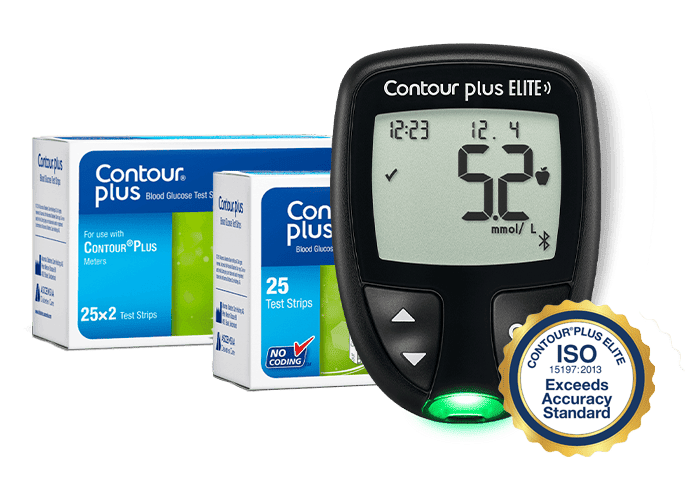Use CGM and BGM together to more confidently manage your diabetes
Continuous glucose monitoring (CGM) can be a convenient way to monitor your glucose levels. However, experts and leading organisations such as the ADA, EASD, US FDA and manufacturers who make CGM systems, all agree that patients using CGM should also have access to a blood glucose monitor.1-6

Before meals to give you a chance to adjust the meal insulin dose

If there are concerns that CGM readings do not reflect your blood glucose

To detect hypoglycaemia in situations, such as:
- before bedtime
- before driving
- before, during, and after exercise and
- when hypoglycaemic symptoms occur
Understanding your glucose monitoring options
People with diabetes, especially those on insulin therapy, have to regularly check their glucose (sugar) levels. There are different types of glucose monitoring systems available for people with diabetes:7,8
How are BGM and CGM different?
Time Delay
Blood and IF glucose values are not equivalent, and it can take up to 6 to 18 minutes for IF values measured by a CGM to reflect the levels of glucose in the blood. This means you may be making decisions based on old information.9

Accuracy Issues
The accuracy of CGM systems can also vary significantly throughout the day, due to the activities of daily life.13 This is why CGM manufacturers state that everyone using their systems should also have access to BGM.1,3-6
When do I need a blood glucose meter?
There are a number of situations where you will need to check your glucose levels using BGM, to get an accurate picture of your blood sugar levels:1-6

Before performing critical tasks such as driving or operating heavy machinery
Driving: Make sure you and everyone else are safe on the road by checking your blood sugar before driving10,11. For people with diabetes, having a blood sugar level above 90 mg/dL is important to avoid low blood sugar, which can slow your reactions and make it hard to make good decisions.
When you are not using your CGM device
(breaks in CGM use, sensor drop-off, other)
Stay in control of your health even when your continuous glucose monitor (CGM) isn't working. If your sensor falls off or any other breaks in CGM use11, always ensure you have a BGM as a backup to check your blood glucose levels. This easy step helps you stay on top of your condition so you can enjoy your time off or deal with unexpected issues without worrying.


When you suspect hypoglycemia or hyperglycemia, or recovering from either
Managing diabetes means avoiding problems before they occur. If you think your blood sugar is too low or too high, or if you're recovering from an episode10,11, it's really important to check your blood sugar. This helps you take action right away and stay healthy.
When your symptoms do not match the sensor reading12
Make sure you stay safe by checking your blood sugar when your symptoms do not match your sensor readings11,12, By double-checking with a finger prick test, will provide you with the confidence you need for your diabetes management decisions.

Important message for those who are pregnant
If you are pregnant, BGM is strongly recommended if you have pre-existing diabetes or develop a form of diabetes during pregnancy known as gestational diabetes mellitus, to achieve the best glucose levels.14
Ask your doctor about the target ranges you should be aiming for.

* Minimum accuracy requirements of ISO15197: 2013 Section 6.3 standard require ≥95% of the measured values to fall within ±0.83 mmol/L at glucose concentrations<5.5 mmol/L or within ±15% at glucose concentrations ≥5.5 mmol/L compared to the reference method.
† An ad hoc analysis demonstrated that 95% of the results were within the error range ±0.3 mmol/L or ±5.3% of the laboratory reference values for glucose concentrations <5.5 mmol/L or ≥5.5 mmol/L, respectively.
1. American Diabetes Association. 7.Diabetes Technology: Standards of Medical Care in Diabetes. Diabetes Care. 2022;45(Suppl 1):S97–S112.
2. Holt RIG et al. Diabetes Care. 2021;44(1):2589–2625.
3. Medtronic Guardian Sensor User Guide. M983403A011_A.
4. Abbott FreeStyle Libre User's Manual, ART38553-001 Rev. C 09/2017.
5. Dexcom G6 CGM/S User Guide LBL014003 Rev 008 MT23976, 2018.
6. Dexcom G5 Mobile User Guide LBL013445 Rev 005 MT23435, 2017.
7. Freckmann G et al. J Diabetes Sci Technol. 2019;13(3):575–583.
8. Richardson & Shaginian. Hypoglycemia Detection in Diabetes. 2022.
9. Choudhary P et al. Diabetes Technol Ther. 2011;13(1):1121–1127.
10. Amudha D.I. et al (2020) Structured Blood Glucose Monitoring in Primary Care: A Practical, Evidence-Based Approach. Clin Diabetes; 38 (5): 421–425. https://doi.org/10.2337/cd20-0045.
11. American Diabetes Association Professional Practice Committee; 7. Diabetes Technology: Standards of Care in Diabetes—2024. Diabetes Care 1 January 2024; 47 (Supplement_1): S126–S144.
12.Gesslbauer, M., K (2022, September). Assessment of accuracy and glycemic control of FGM and CGM and impact on mental well-being. In Current Directions in Biomedical Engineering (Vol. 8, No. 2, pp. 5-8). De Gruyter.
13. Pious S et al. J Diabetes Sci Technol. 2021;1932296821992373.
14. American Diabetes Association. Section 15. Management of Diabetes in Pregnancy: Standards of Medical Care in Diabetes. 2022. 2022;45(Suppl 1):S232–S243.



